Hey Everyone, welcome back to Technique Tuesday.
Last week when my husband, Michael, was proofing the post about how to cut on the diagonal once or twice he wasn’t sure what “on the bias” meant. Then, in my Purely Canadian BOM class last week, I had one of my students ask me what on the bias means.
I figured that I had better do a short little post about what on the bias means.
To lead up to what bias means there are couple of other definitions regarding fabric that one needs to know.
What is the grain of fabric?
The grain of fabric refers to the crosswise and lengthwise grains of thread that are woven together to create the fabric.
Lengthwise grain refers to the threads that run parallel to the selvage. Crosswise grains refers to the threads that run perpendicular to the selvage.
There is no stretch to the grain of fabric but it may have a bit of give depending on the tightness of the weave.
What is the selvage?
The selvage runs along the edge of the fabric. There are two selvages on each piece of fabric.
The selvage helps to keep the threads in the fabric from unravelling. It also prevents any fraying.
Most of the time on one of the selvages will be printed the fabric name, designer and manufacturer of the fabric – this can be very beneficial when wanting to buy more.
As well, the colour palette used in the fabric is often printed in little circles on the selvage depicting each colour in the fabric.
What is bias?
The bias is a 45 degree diagonal line cut across either the lengthwise or crosswise grain of the fabric thus resulting in the threads being on a 45 degree angle.
There is a lot of stretch to the fabric along the bias grain when it is cut on the bias.
This is great for the seamstress when she makes garments as they will drape and cling to the body much better.
In quilting this stretch is not so good when piecing blocks together as they can become misshaped and cause the quilt to be not so square. It is important that the pieces that are cut on the bias are handled as little as possible and not stretched or pulled when sewing them to other pieces. Pinning the pieces together does help the pieces to keep their shape. Some people also use spray starch on the bias edge to prevent it from stretching. Mary Ellens Best Press starch is great for this as it doesn’t leave any residue.
This is a great reason for using a half square triangle technique like this one. By sewing both diagonal lines prior to cutting the triangles from the squares you avoid having to handle a bunch of unsecured bias edges and sewing on the bias.
Same goes for making flying geese. Using a technique like this or this avoids sewing on the bias.
What is Bias Tape?
Bias tape is used in quilting for decorative reasons. Bias tape is especially useful in stained glass quilting as it will bend to any shape and is easy to apply to any raw edge. Bias tape can be bought pre-packaged in a number of widths either fusible or not.
Another use of fabric cut on the bias in quilting is to make bias binding. Bias binding is used for quilts that have a curved edge or an edge that will require the manipulation and bending of the binding fabric to sit nicely around certain shapes.
Well that’s a little bit about fabric and the grains that make it stretchy or not stretchy.
Happy Quilting!
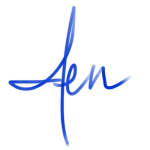

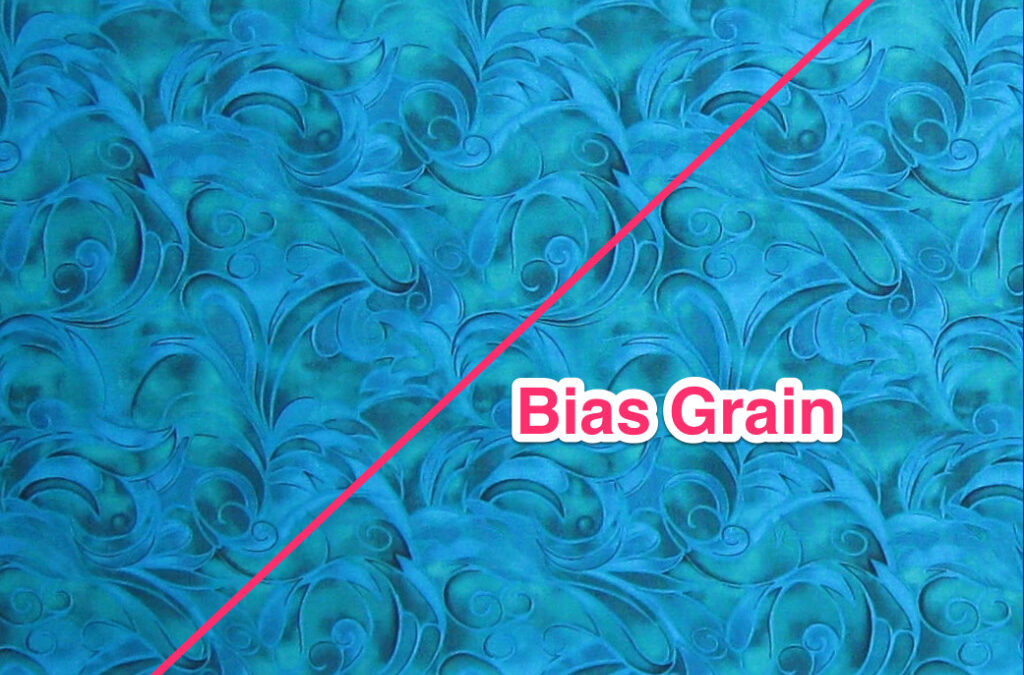
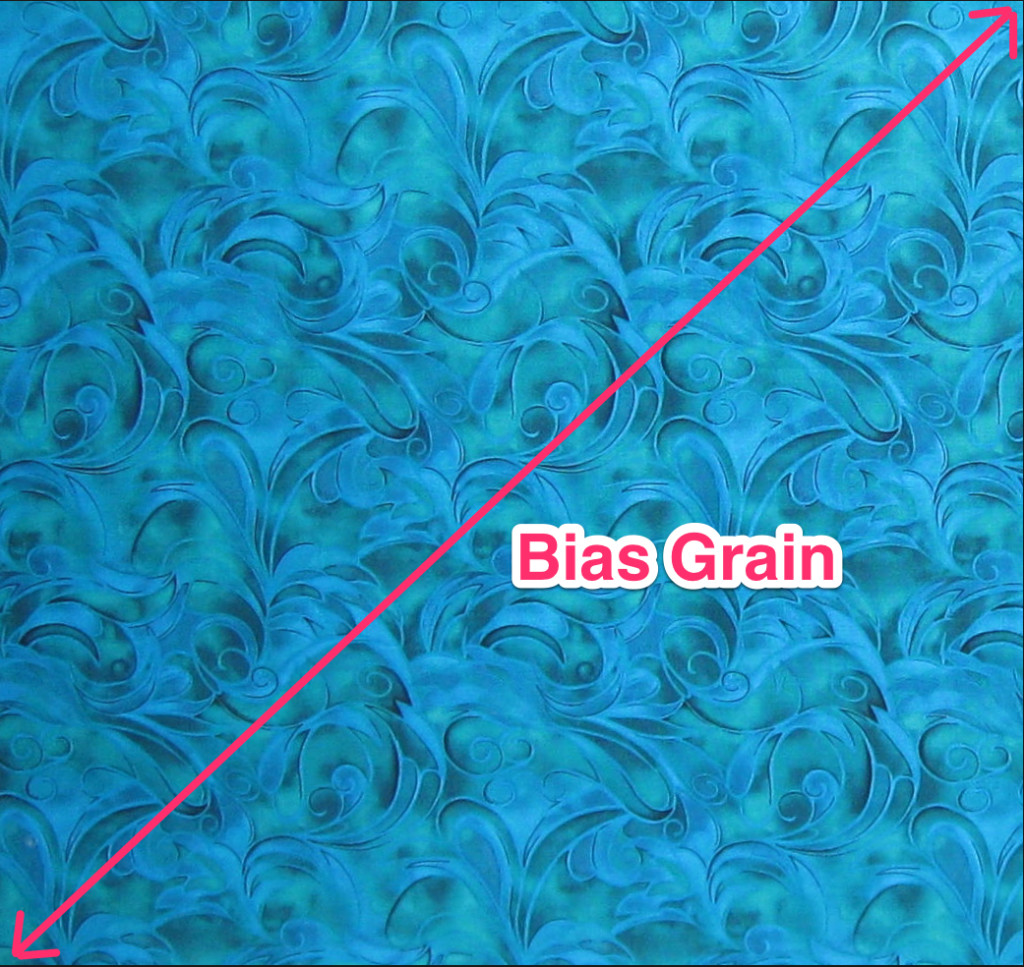
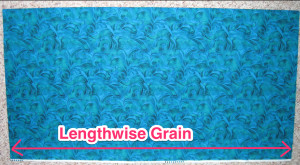
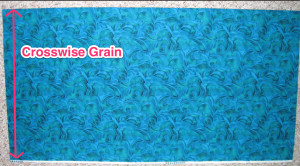
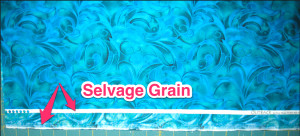
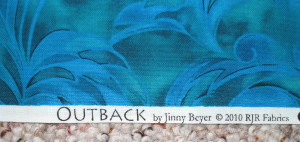
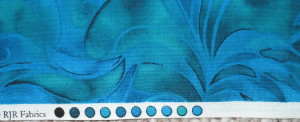
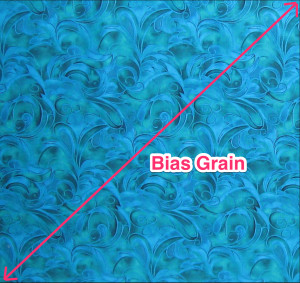
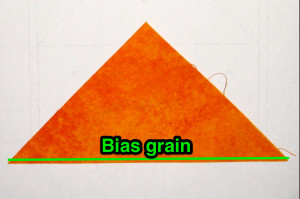

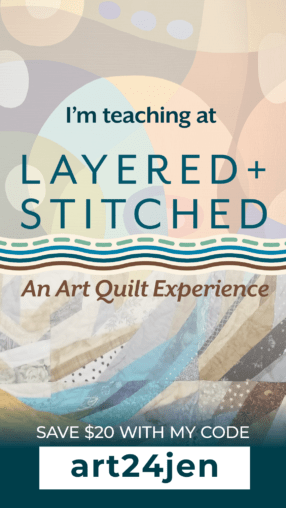

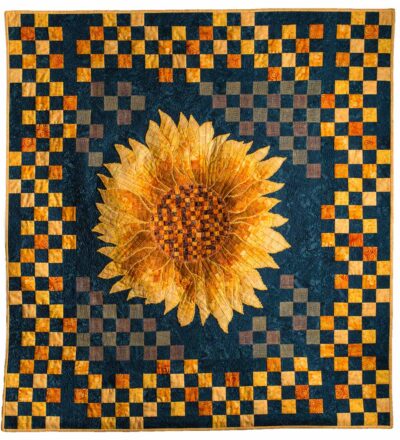
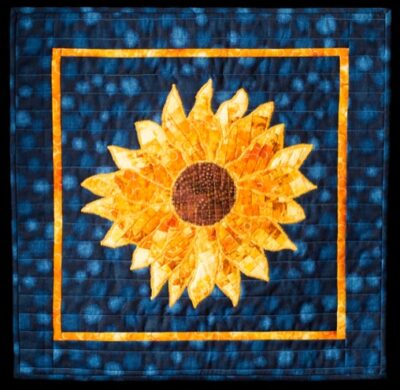
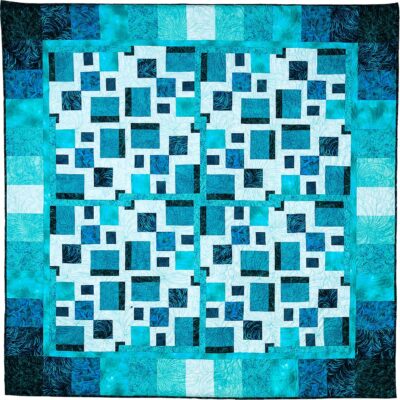
Hey Jen,
Would it be alright to refer my customers to your blog. Great tips, and although I do give some great tips myself, more is better!
Absolutely, Jo-Ann. Refer away.
This was VERY helpful to me. Thank you!!